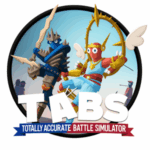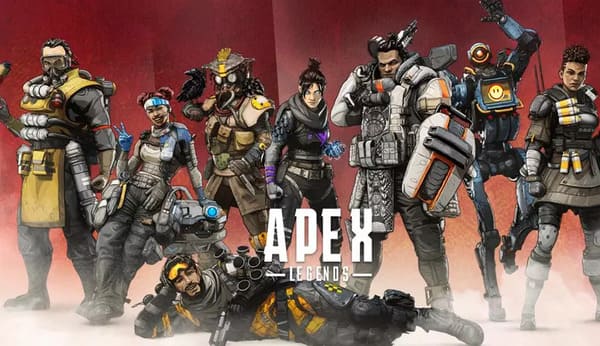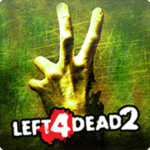Popular Now
Introduction
Grand Theft Auto V (GTA V), developed by Rockstar Games, stands as one of the most iconic open-world games ever created. Released in 2013, it continues to attract millions of players through its ambitious narrative, dynamic gameplay, and sprawling open world. Yet beneath its cinematic storytelling and engaging mechanics lies a controversial system that has shaped the experience of its online component: the in-game economy of GTA Online. This article explores in depth how the game’s economy, shaped by microtransactions and in-game inflation, has created a cycle of grind, imbalance, and frustration for many players. We’ll explore the evolution of this system from launch to today and assess its consequences for both casual and competitive players.
1. The Origins of the In-Game Economy in GTA V
When GTA V first launched, its single-player campaign featured three protagonists—Michael, Franklin, and Trevor—each navigating their own financial ups and downs. The economy in single-player mode was relatively straightforward and offered a satisfying loop of earning money through missions and spending it on property, cars, weapons, and customization.
But the real transformation came with the launch of GTA Online in October 2013. Suddenly, the economy was no longer static. Players could engage with one another in a shared online world, earning money through jobs, missions, races, and heists. To accelerate progress, Rockstar introduced a real-money system called Shark Cards, which allowed players to buy in-game cash. While seemingly optional, this system laid the foundation for the major economic imbalance that would follow.
Shark Cards: A Quiet Disruption
Shark Cards began as a convenience, but quickly morphed into a controversial mechanic. Players who purchased them gained access to luxury vehicles and top-tier gear far more quickly than those playing the game traditionally. What was initially a convenience became an expectation.
2. Inflation Begins: Rockstar’s Content Strategy
In an effort to keep players engaged, Rockstar began releasing new content in the form of DLCs. These updates included new missions, vehicles, businesses, and real estate. With each new update, prices skyrocketed. Supercars that once cost $250,000 were soon replaced by jets and yachts costing $5 to $10 million. The result was economic inflation that made earlier gameplay progression obsolete.
As new items entered the game, the ability to earn money through gameplay didn't scale accordingly. Players found themselves unable to keep up with the increasingly expensive content unless they committed to either grinding or buying Shark Cards.
Examples of Inflation Over Time
-
2013: Adder Supercar – $1,000,000
-
2015: Gold Luxor Deluxe Jet – $10,000,000
-
2017: Oppressor Mk II – $3,890,250 fully upgraded
These dramatic shifts turned the in-game economy into a steep uphill climb for new and returning players.
3. The Rise of Grinding and Player Burnout
With content prices soaring, players found themselves forced into repetitive gameplay just to afford basic upgrades. This trend became known as grinding—repeating the same missions and heists to earn money slowly over time.
While some players took pride in the grind, many found it tedious and unsustainable. YouTube and Twitch became flooded with videos offering guides on how to "efficiently" grind, highlighting just how broken the system had become.
Popular Grinding Methods
-
CEO Crate Missions
-
Vehicle Cargo
-
Nightclub Passive Income
-
Doomsday & Cayo Perico Heists
The need to grind removed much of the spontaneity and creativity that originally made GTA Online fun.
4. The Emergence of Pay-to-Win Mechanics
As the economy worsened, the gap between paying and non-paying players became more obvious. Those who bought Shark Cards could access the best equipment instantly—armored vehicles, weaponized jets, and powerful businesses. This created a pay-to-win environment, particularly in public lobbies where competition was fierce.
One standout example is the Oppressor Mk II, a flying motorcycle with homing missiles. It was powerful, fast, and expensive—accessible primarily to players who could afford it. This led to toxic PvP environments where free-to-play or low-spending players stood little chance of survival.
Consequences of Pay-to-Win Culture
-
New players were discouraged
-
PvP balance was broken
-
Public lobbies became unsafe for mission-based grinding
What was once a competitive, fun space became a hostile environment dominated by wealthy players.
5. Roleplay and the Creative Exodus
Disillusioned with the main GTA Online experience, many players turned to GTA RP (Roleplay) servers, which offered more structured and narrative-driven gameplay. These servers often featured their own in-game economies, which were better balanced and less exploitative.
Roleplay communities emphasized storytelling, character development, and cooperation over grinding or combat. Unlike Rockstar’s economic system, RP servers gave equal opportunity to all players regardless of wealth.
Notable RP Servers
-
NoPixel
-
Eclipse RP
-
GTA World
These communities created a refuge for players seeking a more immersive and fair experience.
6. Modding, Exploits, and Rockstar's Crackdown
In response to the grind and imbalance, some players turned to mods and glitches to generate money. While against Rockstar’s terms, many felt forced into this route due to the game’s economic design.
This led to a wave of modding in public lobbies, with some players using cash drop hacks or invincibility cheats. Rockstar responded with mass bans and money wipes, but these efforts often punished innocent players and missed actual offenders.
Fallout from Rockstar's Anti-Cheat Measures
-
False positives in bans
-
Loss of trust in Rockstar
-
A divided player base: cheaters vs. grinders vs. payers
The crackdown only highlighted how broken the in-game economy had become.
7. The Psychological Toll of the In-Game Economy
The constant grind and pressure to buy Shark Cards created a psychological loop that mimics gambling mechanics. Rockstar designed events and sales to generate FOMO (fear of missing out), driving players to engage in impulsive spending.
Many players reported frustration, burnout, and even regret over their purchases. The grind-to-pay model created a system where enjoyment was often replaced with anxiety over missed content and unfair advantages.
Psychological Tactics in the Economy
-
Time-limited sales on high-end vehicles
-
Exclusive rewards for Shark Card buyers
-
Repetitive rewards that promote daily log-ins
This system mirrors monetization in mobile games more than traditional AAA titles.
8. Rockstar’s Attempts at Rebalancing
Rockstar has made several attempts to rebalance the economy. This includes increasing mission payouts, offering bonus weeks, and introducing solo-friendly heists like Cayo Perico. While these efforts helped, they often failed to match the pace of rising content costs.
For example, while Cayo Perico is a lucrative solo heist, it becomes repetitive after several runs. And weekly bonus payouts only temporarily boost income for a limited set of missions, not addressing the root problem.
Rebalancing Measures
-
Double money events
-
Heist bonuses
-
Passive income businesses (e.g., Nightclub, Arcade)
Still, none of these fundamentally resolved the economic pressure created by the pay-to-win structure.
9. Community Backlash and Feedback
The GTA community has not stayed silent. Online forums, Reddit threads, and YouTube videos have voiced strong criticism of Rockstar’s economic model. Players demand a fairer system that rewards time and effort over financial investment.
Common requests include:
-
Price caps for new vehicles
-
More accessible property systems
-
A loyalty system that rewards long-term play
Despite this, Rockstar has remained largely committed to the Shark Card model, likely due to its profitability.
10. Looking Ahead: GTA VI and the Future of the Economy
With GTA VI on the horizon, players are watching closely. Will Rockstar learn from the past decade of GTA Online? Or will it double down on microtransactions and inflation?
Leaks suggest that GTA VI will feature an even more complex online system, possibly with its own evolving economy and premium currency. But unless Rockstar prioritizes player fairness, the same issues of grind, imbalance, and psychological pressure could reappear.
What Players Hope For
-
A more stable and fair in-game economy
-
Optional microtransactions without power imbalance
-
Better support for casual and creative playstyles
The future of Rockstar’s flagship franchise may well depend on how it balances profit with player satisfaction.Conclusion
While GTA V continues to be a technical and artistic marvel, its in-game economy—especially in GTA Online—has long been a source of player frustration. What began as a balanced progression system has devolved into a grind-heavy, pay-to-win environment shaped by inflation and microtransactions. Rockstar's sporadic efforts at balance have offered limited relief, and many players now look to GTA VI with hope and caution. For the next chapter in the franchise to thrive, Rockstar must rethink how it structures in-game wealth and ensure that time—not just money—is truly rewarded.


















